
views
Delhi Chief Minister Arvind Kejriwal’s offer to provide free rides to women in public transport for their safety has fuelled a discussion on measures to curb crimes against women.
An article in ‘The Conversation’ suggests that “one of the reasons India has not been able to effectively address crimes against women is the lack of women in national political office.”
In India, the police department comes under chief ministers of the state. News18 analyses impact on the crime rate in states with women chief ministers.
Until now, India has had 16 chief ministers in different periods for different durations — from 23 days of Janaki Ramachandran in Tamil Nadu to 5,504 days of Sheila Dikshit in Delhi.
The analysis here only includes those who have ruled their respective states for at least over a year. It excludes union territories as the police department does not come under the chief ministers.
The analysis is limited until 2016 as the National Crime Records Bureau (NCRB) report has not been released after that.
Different CMs, Different Times and Different Outcomes
Not only the first Prime Minister but also the first woman CM in India had come from Uttar Pradesh. Sucheta Kriplani was India’s first woman CM heading the third Assembly of UP for three-and-a-half years (1963-1967).
Kriplani was a celebrated figure who opted politics in times when other women were expected to manage household chores and had least exposure to education.
Her not bending to the demands of state employees who went on a strike for 62 days had established her image as a firm administrator.
However, her tenure gives a grim picture of the crime in the state. Though the NCRB was not collating figures of crimes specifically against the women, reports suggest the incidences of crimes were exponentially high during her regime and came down only when Chandra Bhanu Gupta took over.
The next women to be on power for over a year in Uttar Pradesh was Mayawati. Although she has ruled the state four times starting from 1995, it was only twice that she could acquire the power for over a year: May 3, 2002, to August 29, 2003, and May 13, 2007, to March 15, 2012.
In her first tenure, the number of crimes against women had drastically come down. Yet, it remained on top nationally for reporting the maximum cases of sexual harassment, abduction of women and dowry deaths.
In 2002, the northern state, with nearly 16.4 per cent of the country’s population, was the second highest in contributing 10.6 per cent of the total crimes against women in India.
During the same time, it also led in cases of kidnapping women (15.8 per cent) and dowry deaths (27.7 per cent) and was the second0highest contributor of sexual harassment cases (18.6 per cent).
In 2003, the state continued to rank on top with 21.3 per cent of the total dowry deaths and 40.3 per cent of sexual harassment cases in the country.
In contrast to her first tenure, her second one had the number of crimes against women mostly going up.
The state continued to report the highest number of such cases among other states: 11.3 per cent in 2007 and 12 per cent in 2008.
Coincidentally, these were the years when Newsweek, Time and Forbes listed Mayawati among the top women achievers (2007), influential figure in the country (2007) and among the world’s most powerful women (2008), respectively.
According to reports, she had not hesitated in sacking her office-bearers — ministers and MLAs — accused of committing crimes against women.
Yet, she could not check the crimes being committed in the state. Uttar Pradesh reported the maximum number of women kidnapping cases in the country — from 19.4 per cent in 2008 to 22.2 per cent in 2012.
From 2007 to 2009, it remained the second highest contributor of sexual harassment cases contributing over 20 per cent of the total national burden.
Throughout her tenure, the state remained at the peak with the maximum number of dowry deaths — from 25.7 per cent in 2007 to 27.3 per cent in 2012.
In 2011, expressing concern over the rising number of rape cases, the Bahujan Samaj Party supremo proposed to complete trials in six months and making assault cases non-bailable.
In 2013, UP registered the second-highest number of cases of crimes against women. With nearly 16.7 per cent of the country’s women population, it had accounted for 10.5 per cent of the total national cases of crimes against women. It was among the top four states which accounted for the majority of rape cases with 9.1 per cent of the national burden.
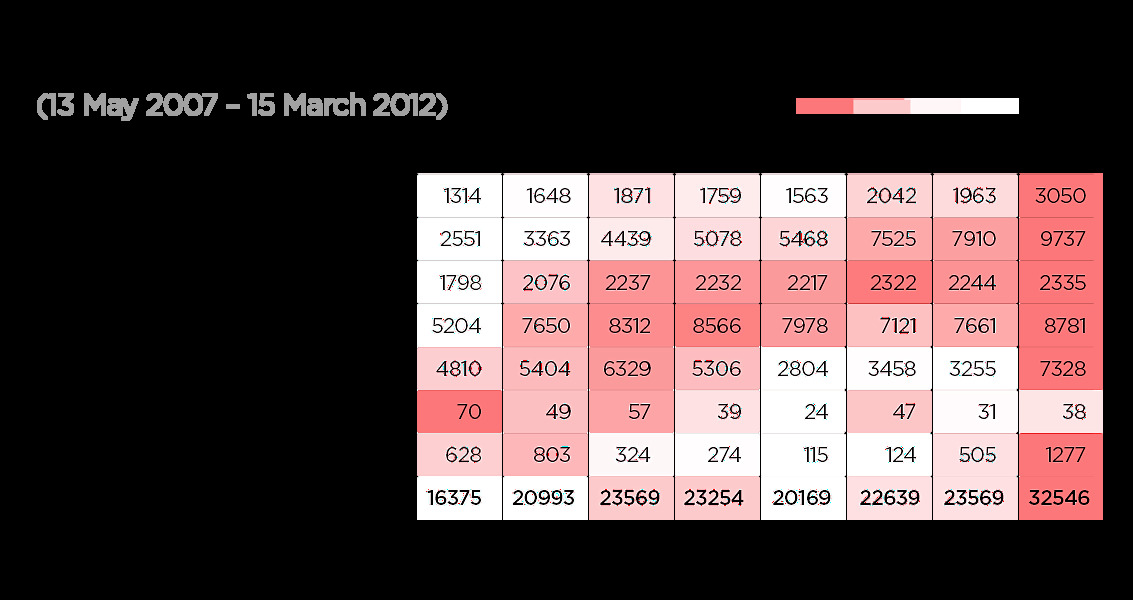
The Anti-Emergency Crusader
It did not take long for India to have another woman CM after Kriplani. In 1972, Nandini Satpathy led the Odisha (then Orissa) government. She was in power till 1976 with a halt for a year from March 1973 to March 1974 due to President’s Rule.
She was fierce enough to criticise the Emergency despite being elected from the Congress. However, as a CM, she couldn’t seem to have done much to check crimes in her state.
Incidents of rape had gone up to the peak by the last year of her tenure — from 52 in 1972 to 88 in 1976 to come down to 68 in 1977. Criminal cases were also unilaterally increasing.
Yet, this did not affect her political mileage as her party continued to win Assembly seats.
Amma’s Regime
Four times Jayalalithaa had been the CM of Tamil Nadu —June 24, 1991 to May 12, 1996, March 2, 2002, to May 12, 2006, May 16, 2011, to September 27, 2014, and May 23, 2015, to December 5, 2016.
As Ruth Vanita writes in “Love’s Rite”, women contributed majorly to Jayalalitha’s mass followership.
After coming to power, Amma, as she was popularly known, brought 26 women into the Assembly — the largest ever elected. She had also introduced a 30 per cent quota in police and established 57 all-women police stations (apart from libraries, stores and cooperative societies).
During her first tenure, crime had initially gone up in the first year, but declined in the subsequent years till 1994, to rise again.
Among crimes against women, dowry cases, sexual harassment and immoral trafficking have been constant troubles for the state.
From 1991 to 1993, the state alone accounted for 60 per cent cases of immoral trafficking in the country. Highest number of such cases — 63.9 per cent, 60.5 per cent and 58.3 per cent — were reported in 1994, 1995 and 1996, respectively.
The state was among the top two and then top four states reporting maximum number of dowry cases in 1992 and 1993, and 1994 and 1995, respectively.
During 1994-95, it was the sixth largest contributor of women crimes reporting about eight per cent of the total cases and among the top six crime-prone states. The southern state led in sexual harassment crimes during 1995-96 reporting over 20 per cent of total cases in the country.
During her second tenure, the total crimes against women had reduced with a major drop in sexual harassment cases. However, dowry deaths continued to increase consistently.
In 2001, Tamil Nadu again accounted for the maximum number immoral trafficking cases (59.48 per cent). The number of cases had decreased by almost half in 2003 in the country, yet the state remained the largest contributor with 51.1 per cent in the same year — a rank held till 2005.
In 2000, the state had the highest crime rate in immoral trafficking of 11.2 per cent as compared to the national average rate of 0.9 per cent. Except for 2002, the crime rate remained the highest in the country — higher than the national average till 2006.
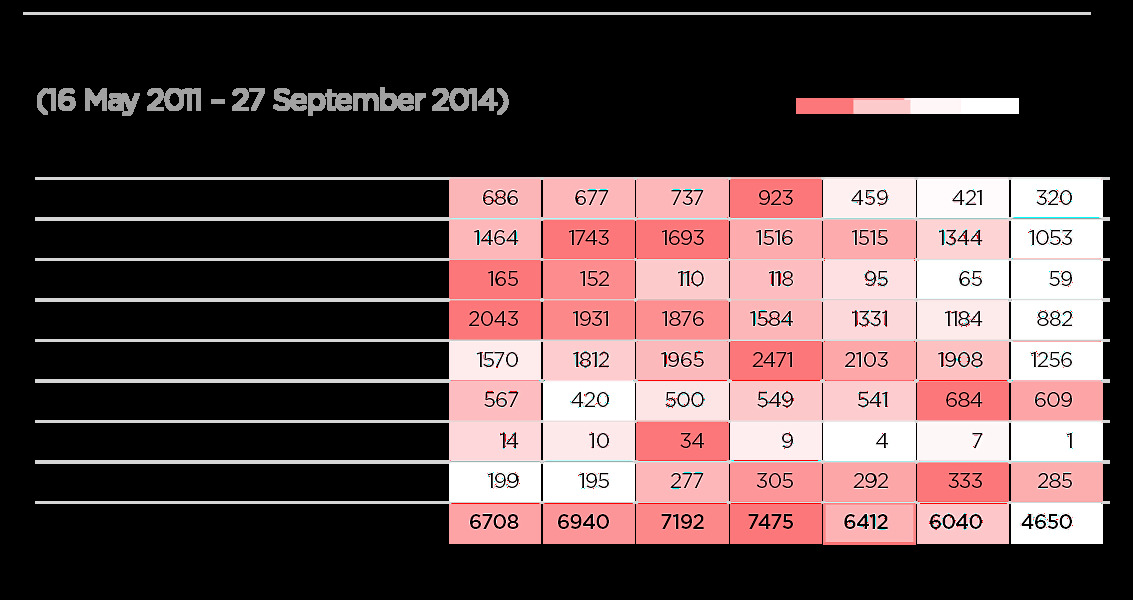
During Amma’s last tenure, the scenario started improving by 2014 and the state saw a decrease in the number of such cases until 2016.
Yet, Tamil Nadu was the second-highest contributor for immoral trafficking with 17.2 per cent of the total cases reported from the state. Between 2012 and 2015, the state registered 20% of the total number of such cases, highest in the country.
Jayalalithaa, famous for the women-centric welfare schemes, had employed a large number of women in the police force and allowed them to run Amma canteens.
These schemes brought more women out of their walled homes. In 20111, under a scheme, named ‘gold for marriage’, the government gave four grams of gold and cash up to Rs 50,000 to financially backward women with a degree or diploma.
Following the December 2012 gang rape case in Delhi, Jayalalithaa had pushed for stricter rules to cover all public places with CCTV cameras.
Her government launched a 24*7 women helpline monitored by senior police officers, ordered for speedy investigation into pending cases of women crimes and setting up of fast-track courts.
Consequently, the number of sexual harassment cases and also the overall crimes against women started decreasing drastically from 2014 onwards.
In 2016, the total count in crimes against women had come down to 4,650 from 6,040 in 2015.
Accidental Chief Minister
Rabri Devi was unexpectedly appointed as Bihar’s chief minister when her husband and the then CM, Lalu Prasad Yadav, had to quit over his alleged involvement in the fodder scam.
However, there were reports that though she was the face of the government, Yadav ruled from behind the scenes. Yet, Devi has been a three-time chief minister — July 25, 1997, to February 11, 1999, March 9, 1999, to March 2, 2000, and was re-elected to power from March 11, 2000, to March 6, 2005.
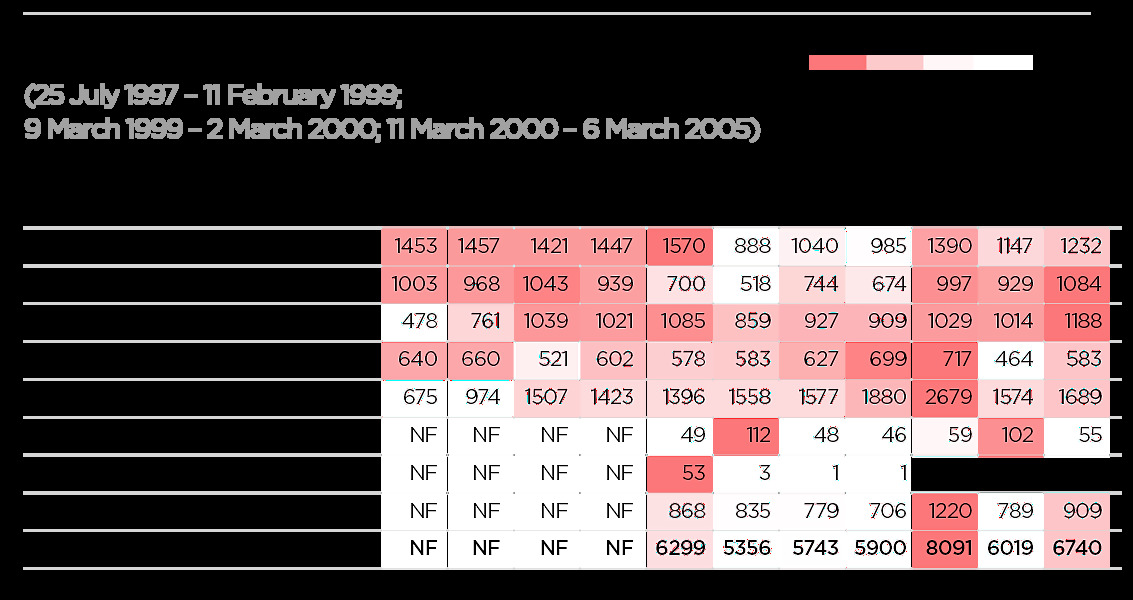
In 1997, one of the six cases of custodial rapes reported in India was from Bihar. The state also registered the second-highest number of dowry deaths throughout Devi’s tenure — ranging around 15 per cent during 1998 and 2005.
Bihar was also among the top two states in reporting the highest number of cases of indecent representation of women. In 1999, about 4.9 percent of the total crimes against women in India was reported from the state.
By 2000, it also emerged as the top state for importing of girls bearing 63 per cent of the national crime burden.
The problem remained throughout her tenure, and even after that — 72.8 per cent of the total number of such cases nationally in 2001, 50 per cent in 2002 and 80.4 per cent in 2003.
In 2004, it reported the second-highest number of cases at 39.3 per cent and again topped the chart in 2005 with 49.7 per cent of the total incidents in the country.
Devi lost assembly elections in 2010 from both the seats she had contested.
When the Highness Ruled
The Rajasthan had a royal woman, Vasundhara Raje Scindia, ruling it twice —December 8, 2003 to December 18, 2008, and December 8, 2013, to December 17, 2018.
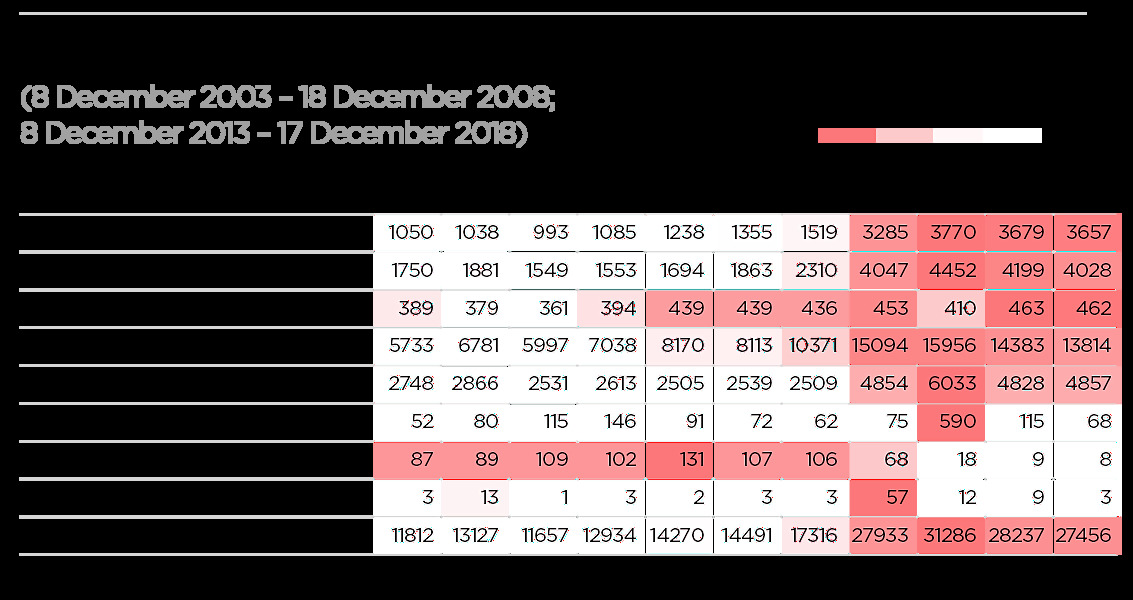
Raje’s first tenure had seen a consistent rise in crimes against women. However, under her rein, some crimes the state was infamous for, were brought down.
In 2003, it had accounted for the highest number of female abduction cases. The figure dipped from 1,881 in 2004 to 1,549 in 2005. The same had gone up exponentially under the Ashok Gehlot government (Dec 2008 - Dec 2013).
The year 2014 was worse than the Gehlot government with the state registering 91.4% of the total registered crimes against women in the country.
Between 2012 and 2016, it was among the top three states reporting torture against women. It was also burdened with the highest number of cases of indecent representation of women in 2012.
However, after a year of Raje returning to power, the number of cases of female abduction, indecent representation of women and torture started declining.
In a bid to empower women remaining within the household, Raje introduced the Bhamashah scheme. Under it, the benefits — financial and non-financial — were getting transferred to women recipients of the family.
In a way, the scheme regarded women as the head of the families giving money in their hands and also gave them reasons to go out of the house as they were the authorised beneficiaries on the behalf of the family. This also gave them an opportunity to report any case of abuse.
This also yielded results as crime incidents against women largely decreased after 2014.
While the number of rape cases in the state had decreased after 2014, the state was its second-highest contributor nationally between 2013 and 2015.
Anandiben in Gujarat
Anandiben Patel was the first woman chief minister of Gujarat, the land of our incumbent Prime Minister Narendra Modi. She was in power from May 22, 2014, to August 7, 2016. She had resigned reportedly due to old age only to take over the role of Governor of Madhya Pradesh in January 2018 and that of Chhattisgarh from August 2018.
During her tenure in Gujarat, crimes against women had dropped significantly in 2015, to again rise in the following year in middle of which she had quit. However, there were major rise in cases of rapes, abduction and human trafficking
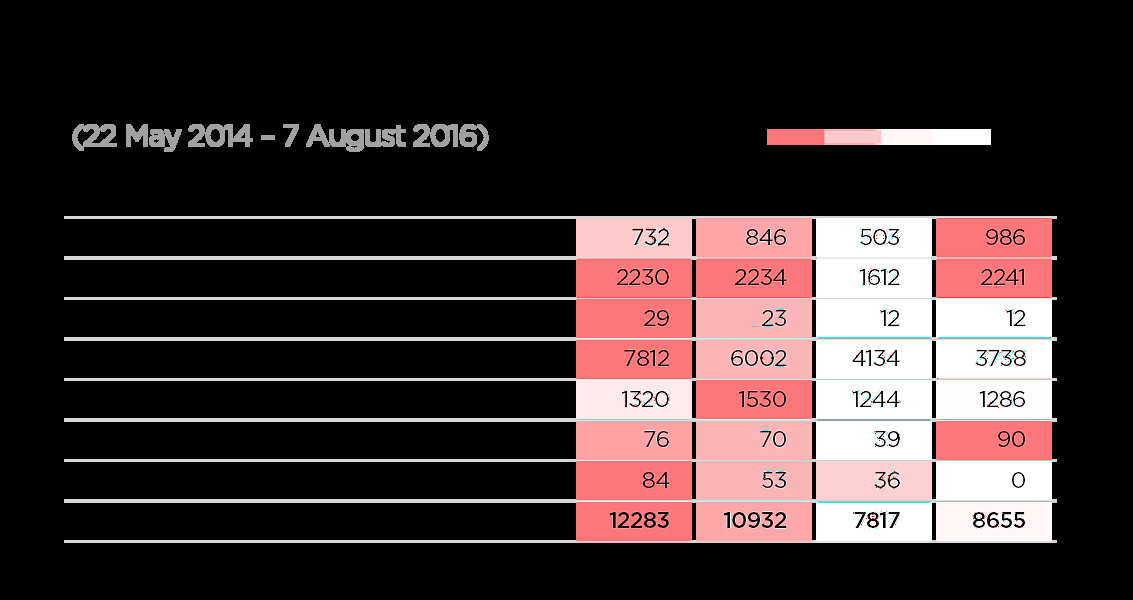
Leading the Troubled State
Mehbooba Mufti was also the first woman chief minister of Jammu and Kashmir. In alliance with the BJP, her government ruled the state from April 4, 2016, to June 20, 2018.
In the year she was appointed, crimes against women had gone down with a major dip in cases of female abductions apart from marginal decline in rapes, torture, sexual harassment and molestation and dowry cases.
While the NCRB report was not released after 2016, reports from the J&K government had suggested rise in cases of crimes against women to 3,168.
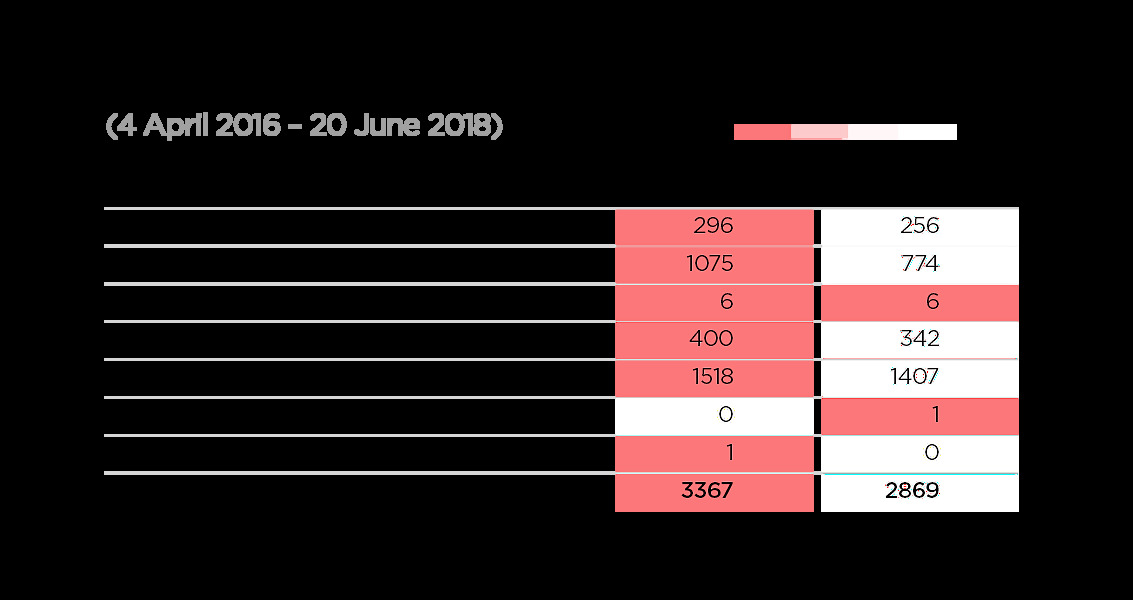
Didi’s Country
Mamata Banerjee is the only incumbent woman chief minister. She has been ruling West Bengal since May 20, 2011. As a railway minister, being the first woman to hold the portfolio, she had inducted women-only ‘ladies special’ trains. However, she has not been able to tame the criminal minds in her state.
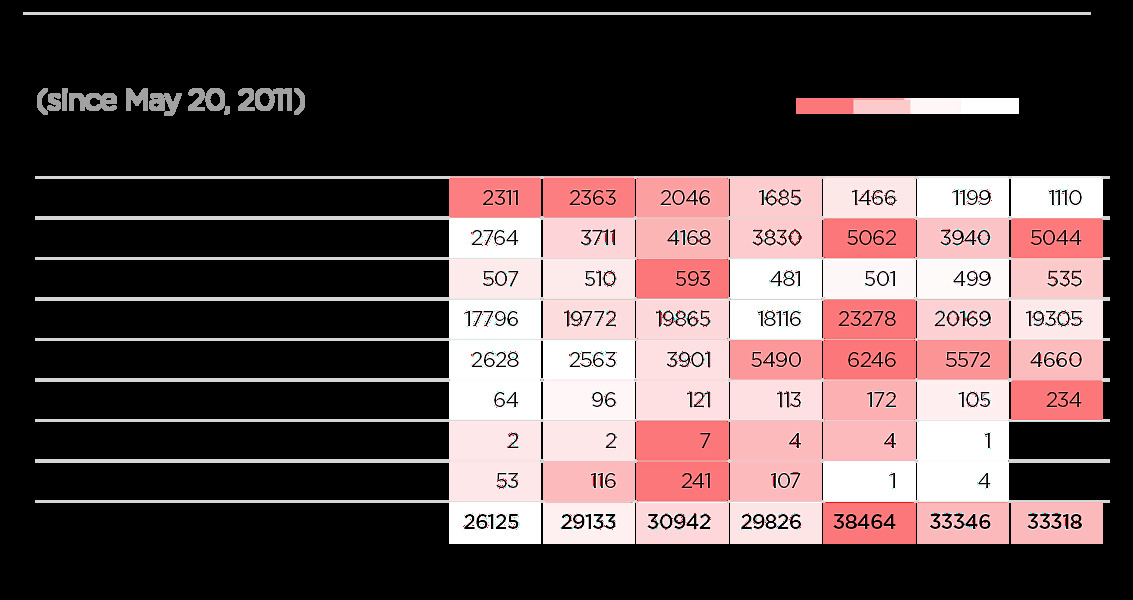
Bengal with 7.5 per cent share of the country’s population has accounted for nearly 12.7 per cent of the total crimes against women in 2011 and 2012.
The state is being ruled by someone who was once the Union minister of women and child development has been hit by rising cases of torture and importing of girls. It registered the second-highest number of human trafficking cases in the country in 2012, then highest in 2013 and again second-highest in 2014.
Bengal topped among states in reporting the highest number of torture cases — 19.9 per cent in 2011 and remained among the highest contributors from 2012 to 2016.
Notably, in 2012, she had blamed the increasing rape incidents to ‘free interaction of men and women’.
Her ‘Kanyashree’ initiative launched in 2013 has been widely appreciated though. Under the scheme, girls aged 13-18 years are provided with an annual scholarship of Rs 500 and a one-time grant of Rs 25,000 to encourage them to continue their studies and prevent child marriage.
Her government has also set up all-women police stations, apart from initiating self-defence classes for school girls, setting up 45 fast track courts to try cases of serious offences against women and a one-stop crisis centre for medical, legal and emotional support for domestic violence and assault victims.
However, apart from the financial scheme, other initiatives have not reached many women in the state, especially in rural areas.
Regarding the differing crime statistics during the tenures of the women CMs, Asmita Basu, programme director of Amnesty India, told News18, “There is no correlation between crime rates and women chief ministers. Just as there is no evidence that women parliamentarians have done more for women than their male counterparts. To expect women CMs to do better in dealing with violence against women is an unfair question. Violence against women must be countered by all — it is not only a ‘woman’s’ issue.”
Kavita Krishnan, secretary of the All India Progressive Women’s Association, said, “It is not the gender of the chief minister, but the policies the chief minister or the government is following should be of concern.”
“An elected woman CM can be as patriarchal or progressive as a man. Whoever in the leadership, men or women, they should be asked to deliver.”
Note: Cases of immoral trafficking and importing of girls have been merged to human trafficking in some of the segments. The human trafficking figures for 2016 are sum of cases reported under Section 370 IPC, Section 366-B IPC (given under crimes against children) and Immoral Traffic (Prevention) Act, 1956. Also, as the NCRB reports have interchangeably used the ‘Sexual harassment’ crime head with both Section 509 and 354, the count of both the cases have been added to exact the count of molestation and sexual harassment cases.




















Comments
0 comment